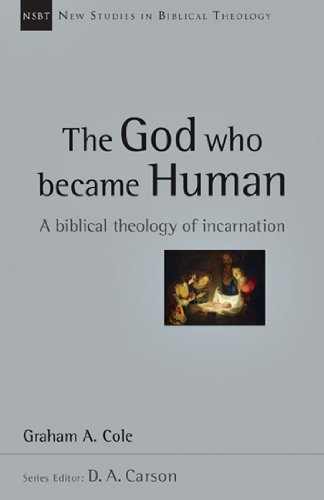A Brief Book Summary from Books At a Glance
By Steve West
About the Author
Graham Cole is Anglican Professor of Divinity at Beeson Divinity School, Birmingham, Alabama. He is the author of numerous books and articles.
Introduction
In this addition to the New Studies in Biblical Theology series, Graham Cole explores how the Old Testament prepares the way for the incarnation of Christ, which is only explicitly revealed in the New Testament. He is careful not to over interpret the evidence, and to avoid the fallacy of reading back full New Testament Christology into the antecedent Old Testament material. After examining the Old Testament data, Cole turns to the teaching of the New Testament on the incarnation. This volume is exegetically careful and competent in the formulations of systematic theology. Cole argues that it is possible to trace out a responsible biblical theology of the incarnation, and he demonstrates how to do so.
Table of Contents
Introduction
Chapter 1 God Prepares the Way from the Beginning
Chapter 2 God Prepares the Way in His Dealings with Abraham and Abraham’s Old Testament Children
Chapter 3 God Prepares the Way in Israel’s Hope
Chapter 4 The Great Mystery
Chapter 5 Cur Deus Homo
Chapter 6 The Significance of the Incarnation
Chapter 7 Conclusion
Summary
Chapter 1: God Prepares the Way from the Beginning
Origins are extremely important, and we must understand where we came from if we are to understand who we are. Long before the incarnation, God prepared the way for it. The Creation account in Genesis shows God as a master worker who designs and builds a world that is very good. The text should be read as a highly symbolic depiction of historical reality. Interpreters throughout history have differed in their understanding of the word “day” in Genesis 1. Although the exact significance of “the image and likeness of God” has likewise been the subject of a variety of interpretations, it is clear that at a profound and basic level God’s image bearers are like him and represent him.
God is absolutely transcendent and he creates by the sheer power of his volitional word. He plants a sanctuary garden, places human beings in it to take care of it, and tasks them with expanding it around the world and having dominion over the created order. Adam is assigned both royal and priestly duties. God comes alongside of Adam and Eve (concomitance) and helps them. Scripture reveals God in language that uses anthropomorphism, anthropopathism, and anthropopraxism (“anthropopraxism” is when divine action or role is described in human terms).
Genesis shows God creating a palace-temple where he will dwell with us. Genesis 3, however, records the tragic and wicked rebellion of God’s image bearers, as they listen to the words of the serpent and turn away from God. The Fall shows both judgment and mercy. God clothes Adam and Eve, and he gives them the promise of the protoevangelium.
Theologians have sometimes wondered if God the Son would have become incarnate even if there had not been a Fall. This question is speculative and non-essential, so we need to be careful in attempting to answer it. Given the fact that God’s creation is a temple where he meets with us, however, it is not wrong to hold that the Son would have become incarnate even if the Fall had never occurred. Our salvation from sin required an incarnate redeemer, but even without sin God’s Son may have taken on flesh to be with us.
Chapter 2: God Prepares the Way in His Dealings with Abraham and Abraham’s Old Testament Children
In Genesis 18, the Lord appears in the form of a man to Abraham. It is only after the Lord reveals himself verbally that Abraham recognizes the man’s true identity. In church history, identifying the spokesman of the three men as a pre-incarnate manifestation of the Son (a Christophany in human form) has a long pedigree. The second time the Lord appears as a man is when he wrestles with Jacob at the brook. Both of these theophanies involve a manifestation as a man, as well as engaging in anthropopraxis.
In Exodus 24, Moses and the elders see the feet of God, which is a theophanic appearance with human features. Later on, God will allow Moses to see his back, but not his face. Israel as a whole, however, does not see the form of God (although they hear his voice). In the story of Gideon, the angel of the Lord appears in human form. Yet as the narrative unfolds, the angel of the Lord and the Lord himself blur, and Gideon is afraid he is going to die because of what he has seen. Walter Kaiser Jr. is confident that the angel of the Lord is a Christophany. . .
[To continue reading this summary, please see below....]The remainder of this article is premium content. Become a member to continue reading.
Already have an account? Sign In
Buy the books

The God Who Became Human: A Biblical Theology of Incarnation